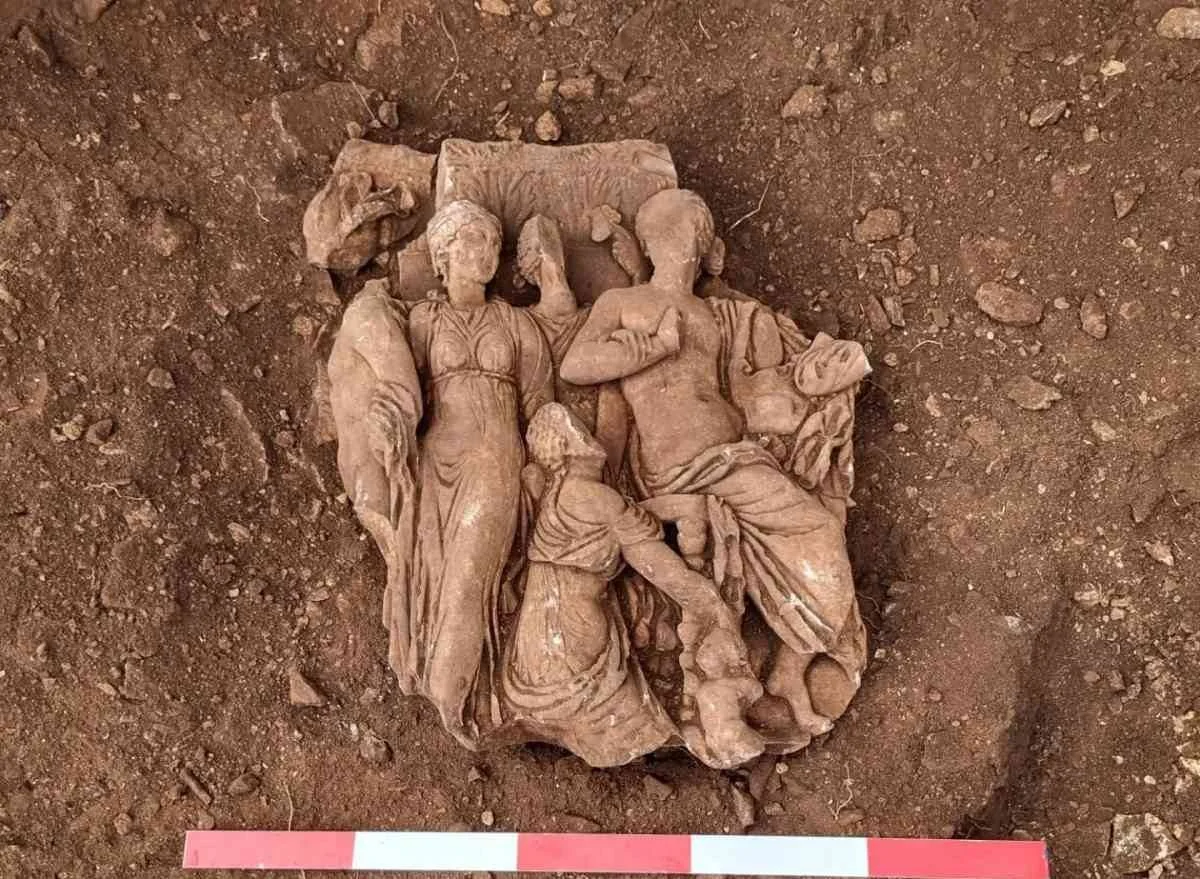A female statue thought to date to the second century AD and two frieze fragments showing scenes from mythologies were discovered during excavations in the ancient city of Olba, which is located in the Silifke neighborhood of Mersin, in the south of Turkey.
The ancient city in the Ören District, which was a significant community during the Hellenistic era and was referred to as the center of the Olba Kingdom, is still being excavated. Work on the project began in July.
In this historically significant area that was once a major commercial center, a group of 15 people working together includes art historians, specialist archaeologists, and students. Associate Professor Yavuz Yeğin from the archeology department at Ardahan University is in charge of the excavations.
Two frieze remnants (architectural bands of decoration) were uncovered this year while digging in separate areas of the ancient city. Both of them depict mythical situations, with one being a female statue from the second century AD.
Associate Professor Dr. Yeğin, the excavation's head, said: "Unique artifacts have been found during this season's excavations. The Cilicia region has not yet yielded any items of a similar nature. Our work in the historic city is moving along at top speed, "
These objects, which are presently in protective custody, have been given to the Silifke Museum Directorate for additional review.
Deep among the Taurus Mountains lie the remnants of the ancient city of Olba. It was perhaps the seat of the Pirindu monarchy, which ruled the region in the sixth century BCE. The earliest buildings found by archaeologists in the Olba region belong to the Hellenistic era.
The ancient city and bishopric of Olba or Olbe was located in the Roman province of Isauria. From the first century CE onward, the city flourished under the Romans. Olba served as the bishop's residence throughout the early Christian era and served as the city's representative at important councils and synods.










